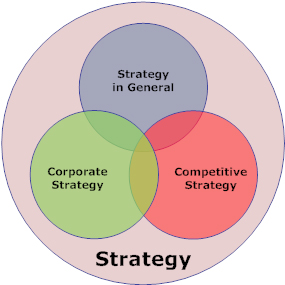
Leaders, or startups, are very interested in talking about topics related to “Business Strategy” or “Strategic Management” because it shows their knowledge and understanding. Building an effective business strategy certainly does not exist only on paper, plans, or reports, but it must be built through practical experience, direct contact with customers.
Here are 7 Principles of Business Strategy that Malu believes every leader should know to help their business grow and not deviate from the original goal.
>>> Branding strategy to “break through” from zero
Mục lục bài viết
ToggleBasic Business Strategies To Know
Any business model, you also need to build yourself a really right business strategy. Here are 7 important strategies that you can refer to to implement:
>>> Brand Management – 11 Principles of Brand Management
1. Business strategy: Compete to be different
Many people assume that the business strategy of a business is to become the best, most outstanding unit in that industry, but however, that mission sometimes cannot be realized.
In sports, there is only one winner, but conversely in business, it is very common for 2 or 3 leading businesses to benefit.

The worst business strategy, is to try to beat the strongest competitor in the industry by copying their every move. Approach different values for success.
2. Business strategy: Competing for profit
Doing business isn’t just about having the largest share of the market, or a business that’s growing at breakneck speed, it’s about the profits you make.
So after all, if all the strategies you come up with don’t have a clear purpose in terms of how much money you can make, it’s best not to waste time and effort implementing them.

3. Understand the market before building a business strategy.
Every business is part of an economic-market ecosystem. Each market will bring its own characteristics and personality. And these characteristics will be related to the profits that you can achieve in the future.
Understanding the market, competitors will form strategic thinking for your business, on how to help you survive and compete.
4. Identify the target customer
Of course, you need to define exactly who you are targeting, and how you will serve this audience. You cannot sell your product or service to everyone, because you only have a limited number of potential customers with the same need.
Therefore, it is necessary to identify the steps to make customers feel satisfied with their needs with the products and value you bring.
>>> Difference between Customer Satisfaction and Customer Loyalty
5. Learn to say no
When you have understood the market, understood the customer, built the value of the commitment of the business, you will gradually realize that there are many things that we have to say no to.

There will be a lot of customer files you don’t serve, activities you don’t need to perform, and products and services you shouldn’t offer.
In business strategy, determining what to do and what not to do is equally important.
6. Not afraid to change
Competitors evolve, customer needs and behaviors change, and technology improves, so an essential element in determining a company’s business strategy is the acumen to spot new trends. can be applied to the business model.

When you don’t change, you are standing still and standing still. Nokia is an example of a fear of change.
Changing their own products is also a way for brands to extend their product lifecycle.
Learn more: What is a Product Life Cycle? Methods to extend the life of a product
7. Systems thinking
Last but not least, the business strategy is the formation of systems thinking, building data and correct data to make assumptions for the growth of the business.
Your judgments cannot always be 100% accurate, so you need real data to judge about customers, about market trends, about everything, ..
>>> Brand Identity – Building a brand identity system
9 steps to build a business strategy
Here are 10 steps to building a business strategy for your business. Hopefully the following suggestions will help you point out the right direction for your organization.
Step 1: Build the right vision
“Vision” can be something of a blur to any of us. In a word, a “vision” is a brief statement of the direction of the business in the future.

However, “vision” does not include specific values, which will be reflected in the “mission” (which includes aspects related to the target market, customers, market share, etc.) sales…).
Step 2: Shaping your competitive advantage
In order to form core business strategies, businesses need to understand what their strengths are in competing with external competitors.
A good business strategy needs to be clear: What factors can make you stand out and be more successful than the competition.
Step 3: Set goals
Choosing the wrong customers to reach, giving development goals that are too low or higher than their capabilities, choosing inappropriate media, no separation between sales and marketing, etc. can cause that business to lose direction, leading to cost losses that are difficult to compensate in a day or two.

A clear and right goal helps your business to harmoniously combine marketing and sales activities, reach the right customers, convey the right communication messages, optimize sales and market. part.
Step 4: Make informed decisions
Without quality data sources, businesses cannot make the right decisions. Decision making needs to be based on carefully calculated information and data.
Emotional decisions lead the business to a game of chance, where success and failure are separated by a thin thread.
Step 5: Focus on sustainable development
Only a solid foundation can help businesses overcome waves and crises.

Investing in sustainable developments such as technology, people, and facilities is something businesses should think about when making long-term decisions.
Step 6: Stay up to date with new information
It is true that businesses should focus on long-term development, building from solid foundations, but the market is always changing day by day.
Standing still is the same as moving backwards in the face of the opponent’s development.
Being flexible to changes in the external environment is necessary and should be considered in business strategy proposals.
Step 7: Consult with various parties
A good business strategy requires consultation from many different parts of the business.

Many times, the expertise factors from experts in each specific field can help businesses make reasonable and right decisions.
Step 8: Have a thorough preparation
Thorough preparation is crucial in any strategy building activity.

In order to prepare well, you need to carefully perform tasks such as: Market research, searching for information related to internal and external factors of the business…
Step 9: Things to keep in mind when implementing a strategy
Any longer strategy needs to be realistic and applicable in the current context. Therefore, you need to pay attention to the following issues when planning to develop your business:
- The strategies you build can track and measure performance on a monthly basis.
- The results of the strategy need to be measured through quantitative indicators (such as KPIs).
- Regularly share the vision and goals of the business so that employees in the company know and understand their mission and role in the development of the business.
- There are periodic reviews of the effectiveness of the strategy. Make changes if necessary to the strategy.
3 Types of building a business strategy
There are three basic types of strategy that any leader must really understand: (1) common strategy, (2) corporate strategy, and (3) competitive strategy. This section will clearly define the differences between the three types of business strategy formulation and raise some helpful questions.

1. Common Strategy
Conventional strategy – concerned with how a particular goal is achieved. Therefore, this type of strategy is more concerned with the relationship between the ends and the means of implementation, between the results and the resources to be used.
Strategy or Tactics both involve taking necessary actions to achieve specific goals. Mostly, strategy is concerned with how you deploy and allocate resources at will while tactics are concerned with how you use them.

Together, strategy and tactics bridge the gap between ends and means.
Strategy and tactics are terms formed from within the military. However, in business, it is the basic foundation of any success.
2. Corporate strategy and competitive strategy
Corporate strategy will determine which market segment the business operates in, how its business model is. Competitive strategy will define the core values that are used to compete.
Corporate strategy usually determines issues related to the vision and strategy of the business, telling customers what they do, why they exist, and what they will become in the future.
Competitive strategy is the sum total of capabilities, strengths and weaknesses of an enterprise when compared with direct competitors in the same industry.

According to Michael Porter, a professor at Harvard University, competitive strategy is influenced by five main factors:
- Threat from new entrants to the market.
- Threat from substitute products or services.
- Supplier strength.
- Buyer Power.
- Competition between businesses exists.
He also emphasized that, to solve the above 5 factors, a competitive strategy needs to possess: (1) focus, (2) differentiation, and (3) leadership.
>>> Brand Awareness – A handbook on brand identity
Factors affecting business strategy
Here are some basic factors that directly affect the business strategy of the enterprise:
- Products/services offered.
- Natural resources.
- Marketing and Sales Methods.
- Production capacity.
- Customer responsiveness.
- Growth target.
- Distribution method.
- Technology platform.
- Type and market demand.
- Profit target.
Michael Treacy and Fred Wiersema suggest that there are 3 principles to absolutely follow in business strategy including:
- Operational Excellence
This strategy depends on the ability to produce and deliver the product/service. The goal is to lead the market by price and convenience. - Customer Intimacy – Customer Loyalty
This strategy focuses on providing products and services that are truly tailored to selected customer segments. The goal is to build lasting relationships and build loyalty. customer loyalty to the corporate brand . - Product Leadership Generation – Delivering leading products
The strategy focuses on developing superior, innovative products and services. The goal is to quickly commercialize product ideas belonging to the enterprise.
Frequently asked questions about strategy
If the above definitions seem a bit confusing, the frequently asked questions below will be more suggestive for you:
>>> Brand Equity – Learn about brand equity
Relating to the brand’s vision and mission
- Who are we?
- What do we do?
- Why are we here? (this market)
- What sector does the company operate in?
- What do we want the business to become in the future?
- What do we want the business to become in the future?
>>> Why Brand Needs Tagline, Slogan, Mission and Vision?
Regarding the popular strategy
- What are the business goals?
- Current business strategy?
- What actions can help us achieve our goals?
- What facilities and resources should be used?
- Is your business limited by no means or resources?
- What serious risks do we need to prepare for in advance?
Relating to corporate strategy
- Current business strategy?
- What are the assumptions about the feasibility of the new strategy?
- What happens in different environments (different social, political, technological, and financial)?
- Business growth and profit goals?
- Where is the target market?
- In what particular industry or sector?
Relating to competitive strategy
- What is the current competitive strategy?
- What are the assumptions about the feasibility of the new strategy?
- What is the general situation of competitors and the market?
- Business growth and profit goals?
- What type of products and services does the business provide?
- What target customer segments does it serve?
- How are buy/sell decisions made?
- How do businesses distribute products and services?
- What is the technology platform businesses use?
- Core platforms required?
- Basically what are we going to compete with?
Hope the above article has helped you to build a complete picture of the competitive story in business. Immediately consult Malu’s professional brand identity design and consulting service.




